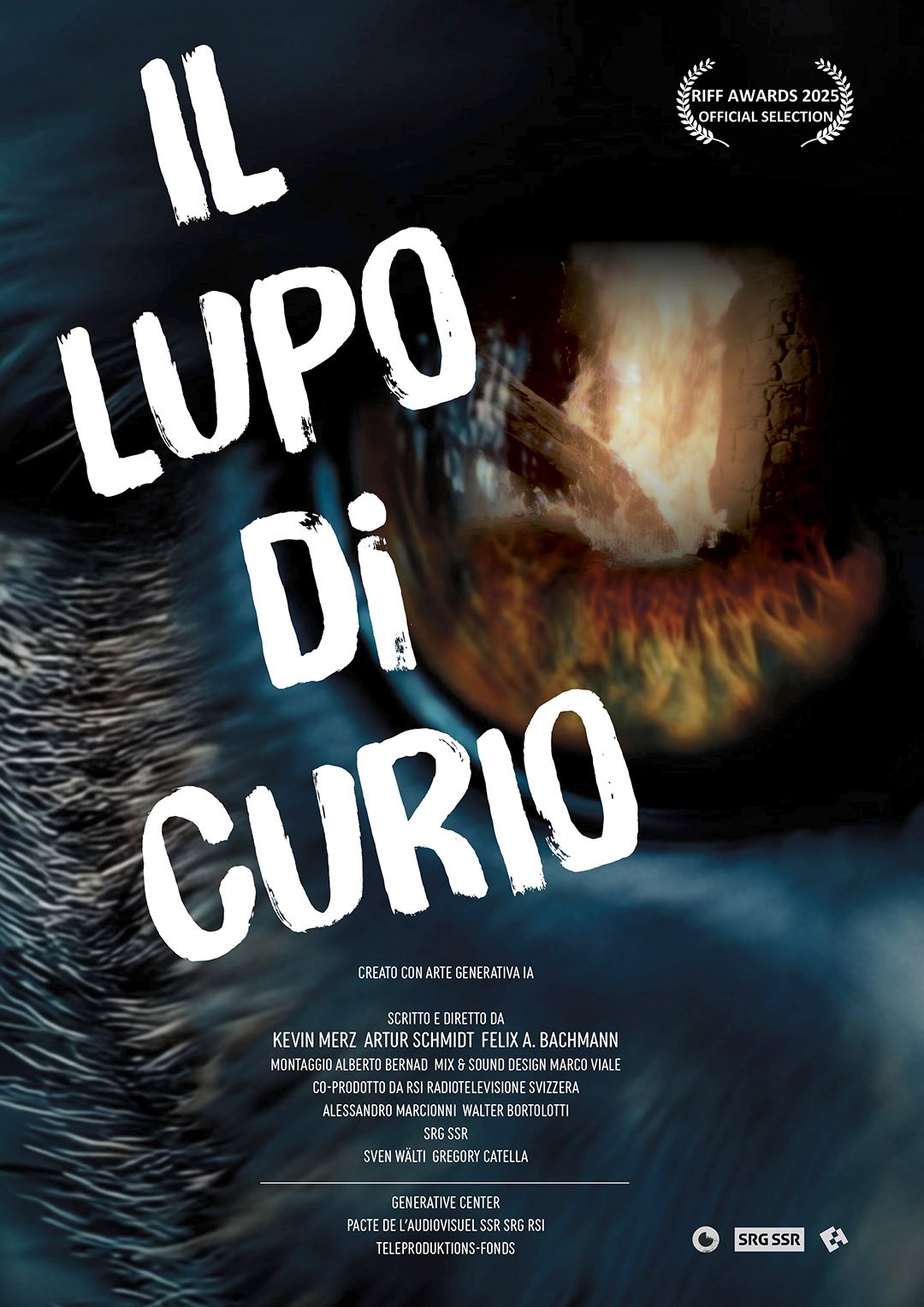Lupo di Curio

Pilot Film Episode: Ecco delle Leggende
Duration: 14 min.
Format: 4k - stereo & 5.1 Written and Directed by: Felix A. Bachmann, Kevin Merz, Artur Schmidt
Editing: Alberto Bernad
Sound Mixing and Foley: Marco Viale
Voice Narration / italian: Patrizia Salmoiraghi, Chiara Francese, Marco Balzarotti, Luca Semeraro
Produced by Generative Center: Felix A. Bachmann, Kevin Merz, Artur Schmidt. Pacte de l’ audiovisuelle SSR SRG, Teleproduktion Fonds.
Co-produced with RSI Radiotelevisione svizzera: Alessandro Marcionni, Walter Bortolotti SRG SSR: Sven Wälti, Gregory Catella
Teleproduktions-Fonds
Generative Center
LOGLINE
In the ancient Swiss village of Curio, a fearsome black wolf transforms from a terrorizing predator to a revered symbol of redemption and unity when a single act of courage blurs the lines between man and nature, fear and compassion.
SYNOPSIS
In the heart of Switzerland’s Alto Malcantone region lies the village of Curio, nestled among serene landscapes and lush forests. Known as “Lüv” and bearing the emblem of a black wolf, Curio’s identity is intertwined with a remarkable legend. Once terrorized by a ferocious black wolf attacking livestock, the villagers lived in fear until a dramatic turn of events transformed the creature’s image forever. One fateful night, while men hunted the beast, a fire broke out, trapping a child inside a burning house. To the villagers’ astonishment, the black wolf emerged from the flames, carrying the child to safety before disappearing into the forest. This miraculous act redefined the wolf as a symbol of courage and coexistence, immortalized in Curio’s coat of arms and remembered as a tale of redemption and humanity’s profound bond with nature.
The wolf of Curio remains a living legend, celebrated as a reminder that even in the darkest moments, light and understanding can emerge from the most unexpected places.
Themes and Interpretation
The myth of the Wolf of Curio transcends its narrative of survival, offering an allegory of trust, transformation, and unity. It is a story that resonates with deep cultural significance. It asks us to reflect on a philosophical question that resonates across generations: Who is truly the beast? And how much space is humanity willing to grant to the wild and untamed aspects of nature? And nature, in this context, also refers to our own untamed human nature.
The Wolf in Human Culture and History
The wolf’s significance extends beyond its physical presence, rooted deeply in human history and mythology. Once a feared predator embodying primal fears, the wolf has long influenced the collective imagination of European communities. Paradoxically, this same creature is the ancestor of the domesticated dog, a loyal companion that has evolved from predator to partner over millennia.
The myth of the Wolf of Curio, in particular, has ancient ties to our hunter-gatherer roots and shamanistic connections through young hunters’ rites of passage. This myth embodies two complementary symbolic aspects of the wolf within the same narrative: the Nordic European wolf, the devourer of all, and the Mediterranean female wolf, the giver of life (as seen in the legend of Rome with Romulus and Remus). Indeed, it reflects a transition in the symbolic understanding of the wolf, bridging the world of hunter-gatherers with that of emerging agricultural societies.
The Relationship Between Wolf and Human
The dynamic between humans and wolves is as intricate today as it has been throughout history. The wolf, having returned to habitats it previously abandoned due to human encroachment, now interacts directly with agricultural and pastoral life. This resurgence poses significant challenges to rural economies, especially for farmers whose livestock—goats, cows, and sheep—are increasingly vulnerable to wolf predation.
In Ticino and across Switzerland, sightings of wolves near villages and forests are on the rise. As a species with no regard for borders and an instinct for vast territorial movement, the wolf presents new dilemmas for those living and working in these areas. How is this renewed proximity perceived? What solutions can bridge the gap between human needs and wildlife conservation? These questions dominate discussions among farmers, hunters, and local authorities, reflecting the ongoing complexities of coexistence.
Film Stills
